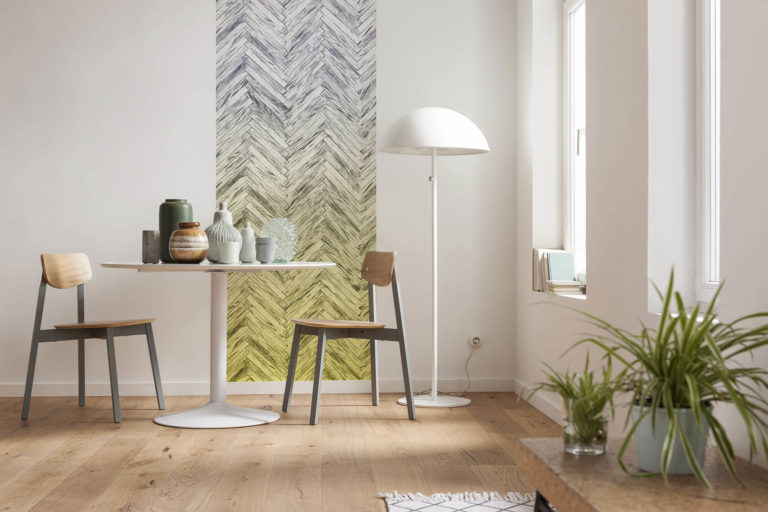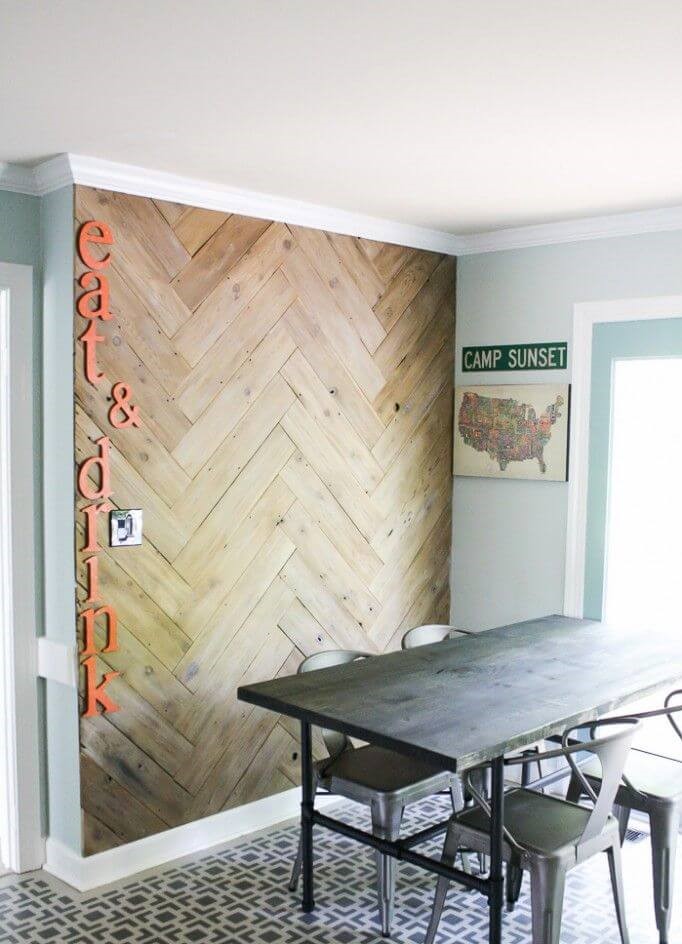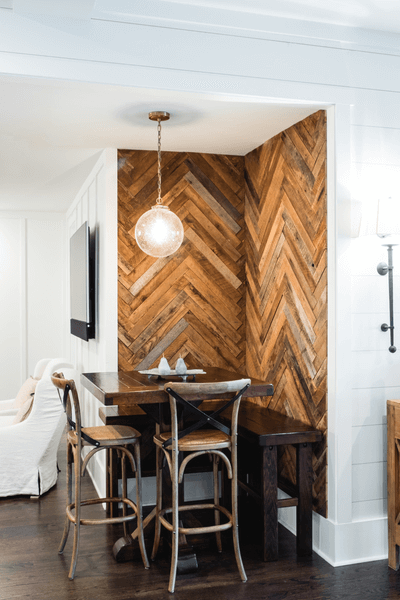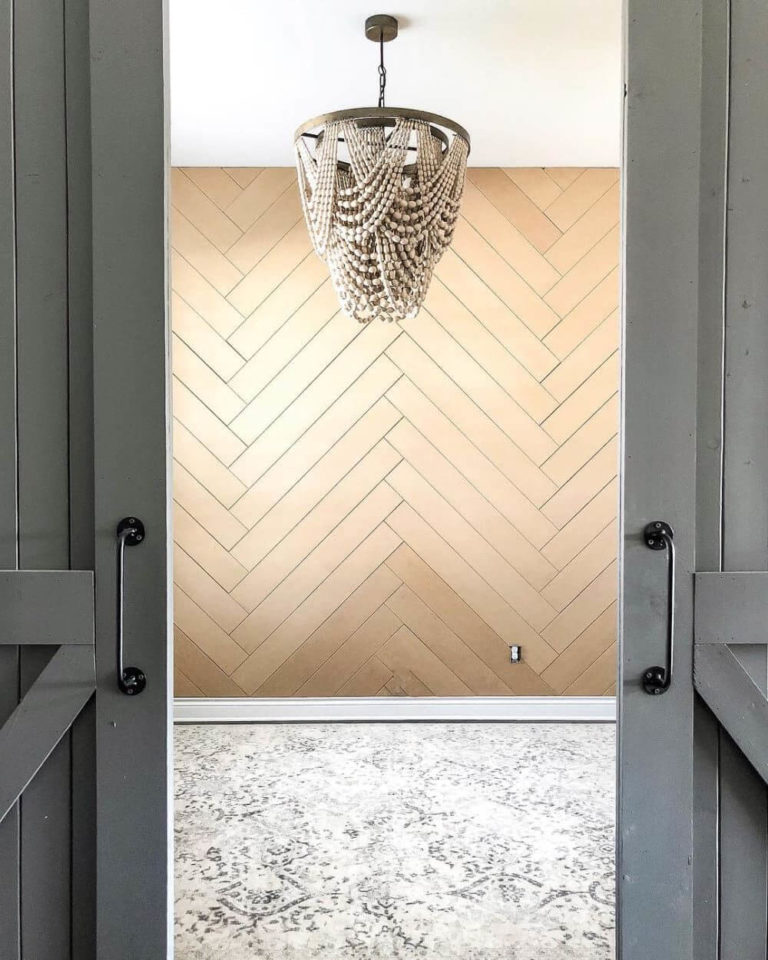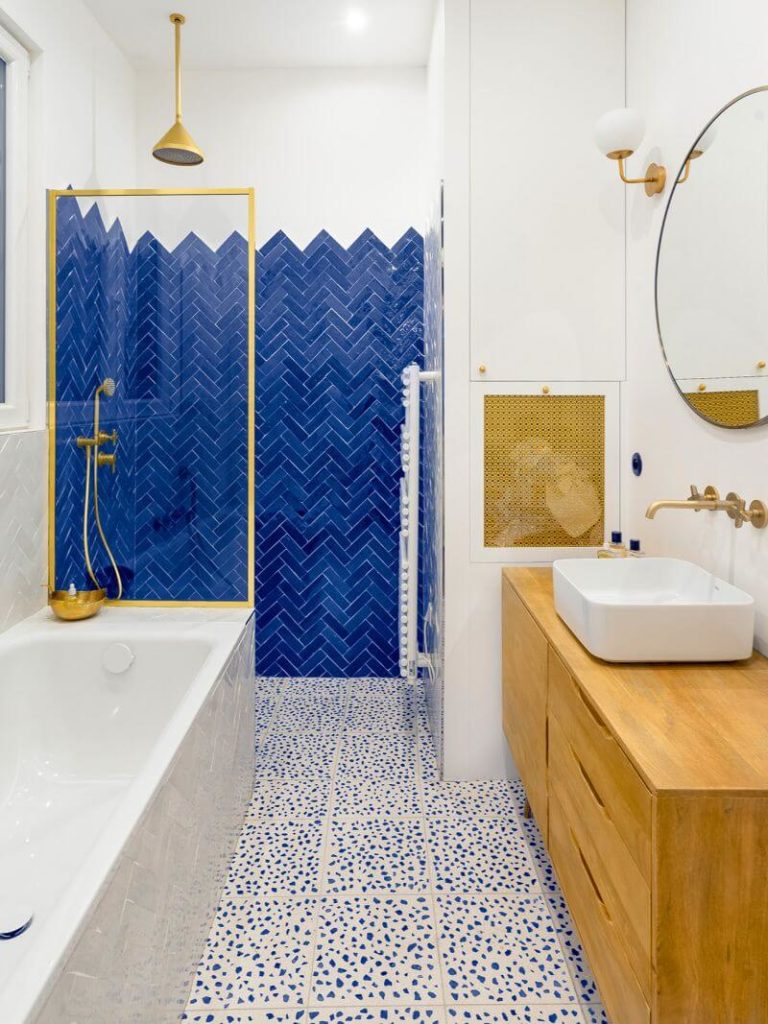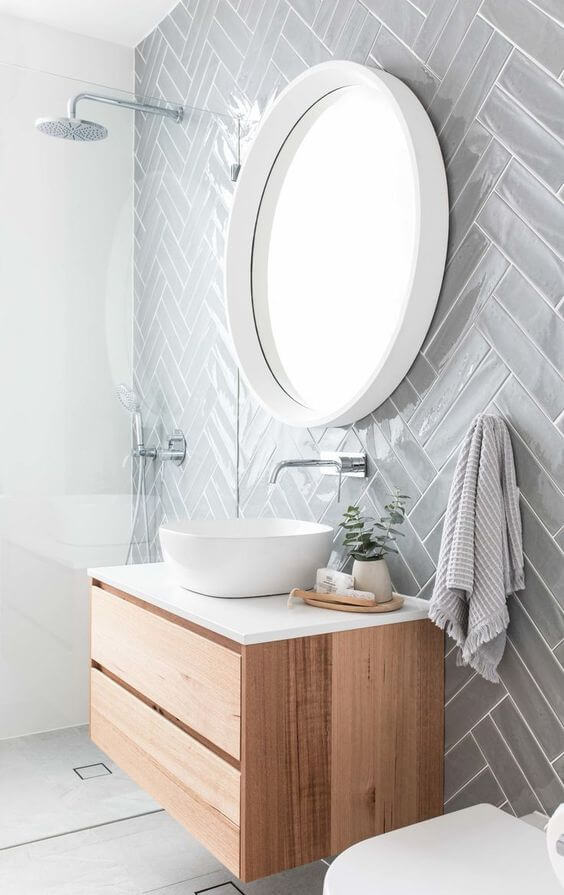Herringbone accent wall: fantastic design ideas, helpful tips, and an enormous amount of inspiration

An accent wall allows you to play with colors and textures for a bold result and make this particular element the focal point within a room. Although looking emphasized in contrast with other parts of the decor, an accent wall still has to be integrated into the overall style to ensure its integrity. There are unlimited choices when it comes to the design of the wall that stands out from the rest elements of the room. Today, we suggest completing it by referring to the Herringbone pattern.
The popular Herringbone pattern is traced back to ancient times when it was associated with something elite. Although it is applied today on a large scale and for quite an affordable price, Herringbone has not lost its magnificent effect of adding depth and a sense of stability. Besides that, the visually pleasing look and repetitive patterns add interest and individuality to any space. It sounds like quite a perfect companion for an accent wall. Why not combine them and enrich the contemporary settings with the much missing feel of sophistication? If that’s what you are looking for, consider yourself lucky since we have prepared a list of the best design ideas for a Herringbone accent wall, including materials and colors to match the style of any room. As with any other decoration process, we cannot skip the essentials. Therefore, we would like to draw your attention to the main aspects to consider for successful integration.
3 Starting points you cannot miss
Herringbone accent with less effort
The first option to top this list is the one that offers more design variations and implies less effort for integration. It sounds too perfect to be true, isn’t it? This range of alternatives is open to you if you opt for Herringbone wallpaper for an accent wall. That’s right! You don’t have to play with wood panels and make sure that everything is in its place; a simple touch of professional glue, a few moves here and there, and your accent wall is ready.
Furthermore, you can achieve a textured effect with wallpaper that replicates wood. Nevertheless, classic wood is not the only option. This approach allows you to play with colors and shapes any way you want, even deviating a little bit from the initial Herringbone pattern for an original effect.
Herringbone pattern with wooden texture
One of the most popular approaches to an accent wall is the integration of wood panels. What a coincidence that wood is the best option to fit the Herringbone pattern. The result promises to be fascinating. The first and probably most versatile variant is natural wood, avoiding any paint covering.
If you feel limited in options, we want to convince you of the contrary. Wood alone can offer you a wide range of variations, from particular types of wood, which vary in texture and color, to various surfaces, such as aged wood, with uniform or uneven cover. That’s not all! You can include different variations on the same accent wall for an emphasized effect. Such an approach will ensure comfort within a bedroom, enhance the aesthetics of a farmhouse living, or add coziness to a dining area.
A modern alternative to wood panels
If natural wood for an accent wall looks too extra for your modern setting, although the last tendencies encourage the integration of raw materials, a perfect alternative that will work best for you and your style is shiplap, which replicates the Herringbone pattern.
These long wooden planks painted in any color you want will add as much texture to your interior design, keeping it smooth and exquisite. Be it Modern Farmhouse, Scandinavian style, irreplaceable Vintage, or glamorous Art Deco, an accent wall like that and an accordingly chosen color will complete your interior design, adding visual interest.
Herringbone pattern with accent tiles
A Herringbone accent wall is as welcome in such spaces as the bathroom, kitchen, or dining area. Nevertheless, these rooms require a particular approach, which has to be both functional and stylish. There is no doubt that tiles are a leading option when it comes to practicality and the ability to adapt to any style.
Small-size tiles with a Herringbone pattern can be used to decorate a particular wall in the kitchen or emphasize a specific area where bold colors are most appropriate. If we switch to the dining area, large neutral-colored tiles are welcome.
Things get more interesting as we reach the bathroom. The variety of colors will not disappoint you. The same goes for the options as to what wall to choose as an accent one. It depends on what particular area you want to emphasize. Is it the wall where the shower or bathtub is to be found or the one where the sink and mirror are installed?. It is entirely up to you. One small piece of advice: the fewer units against that wall, the better it will serve as an accent.



